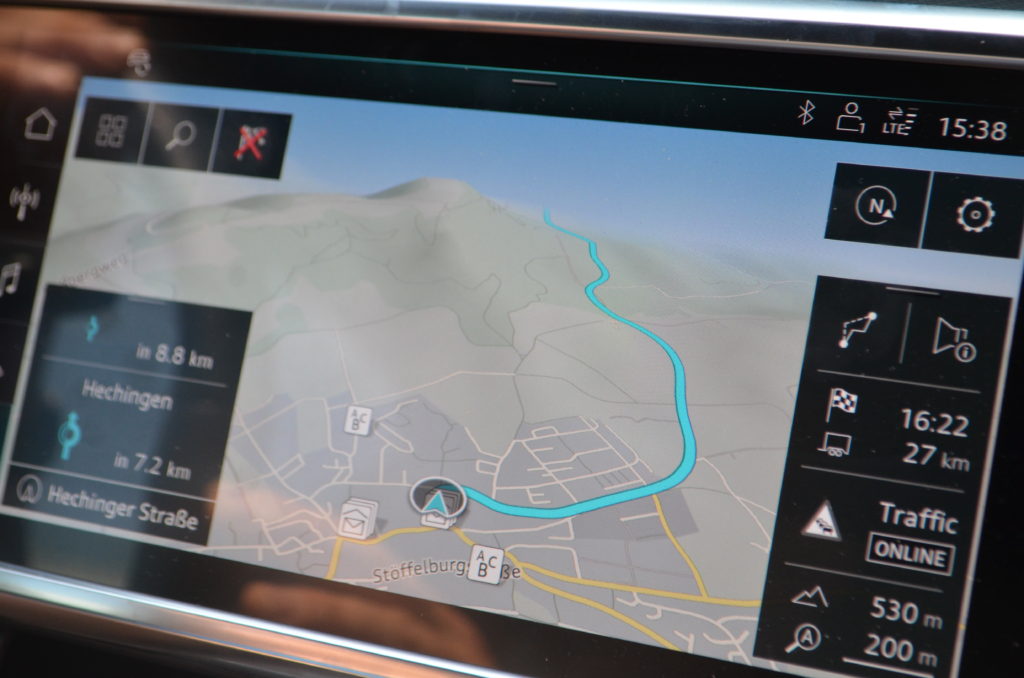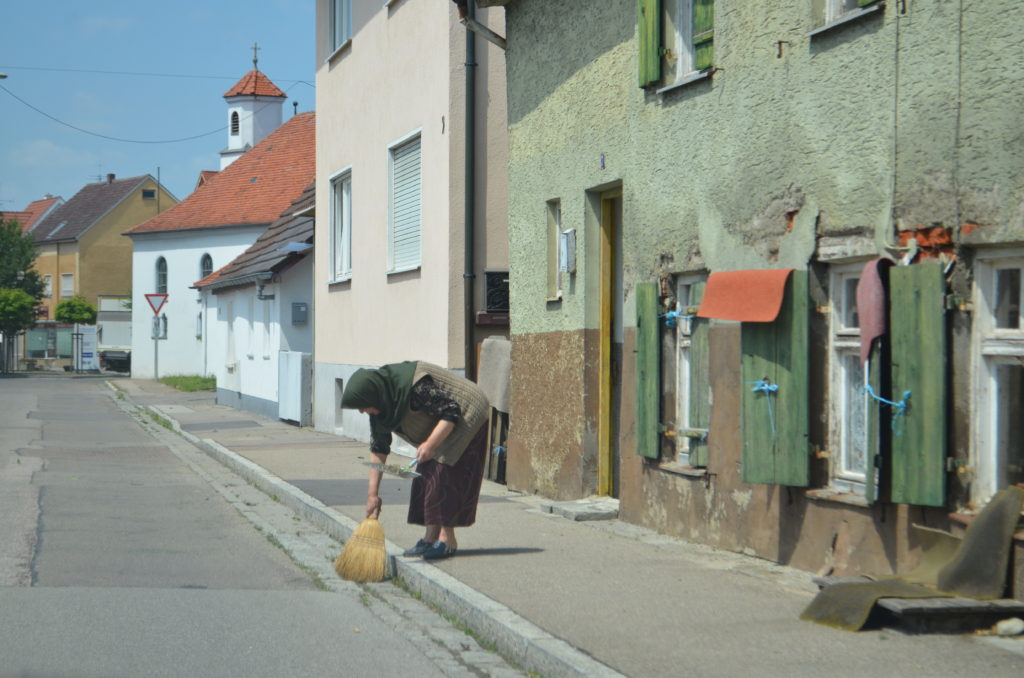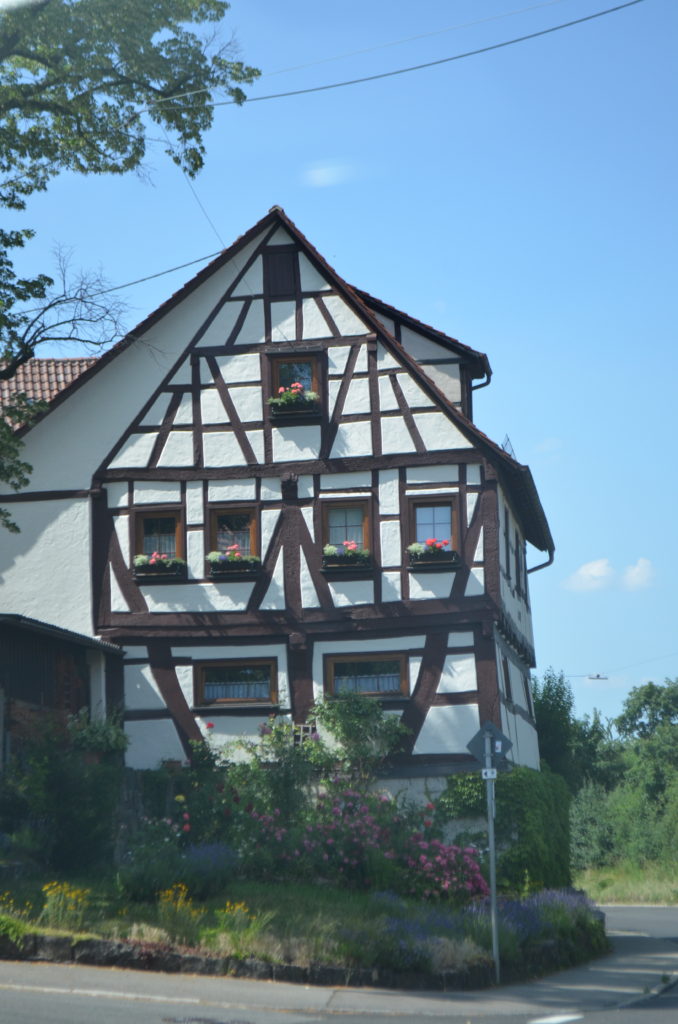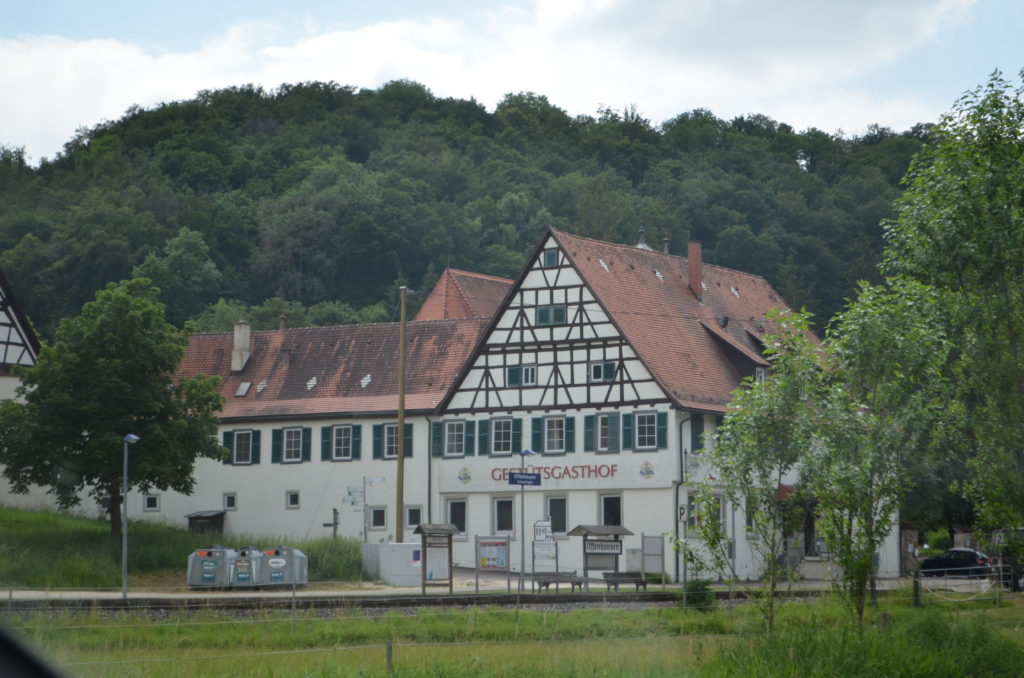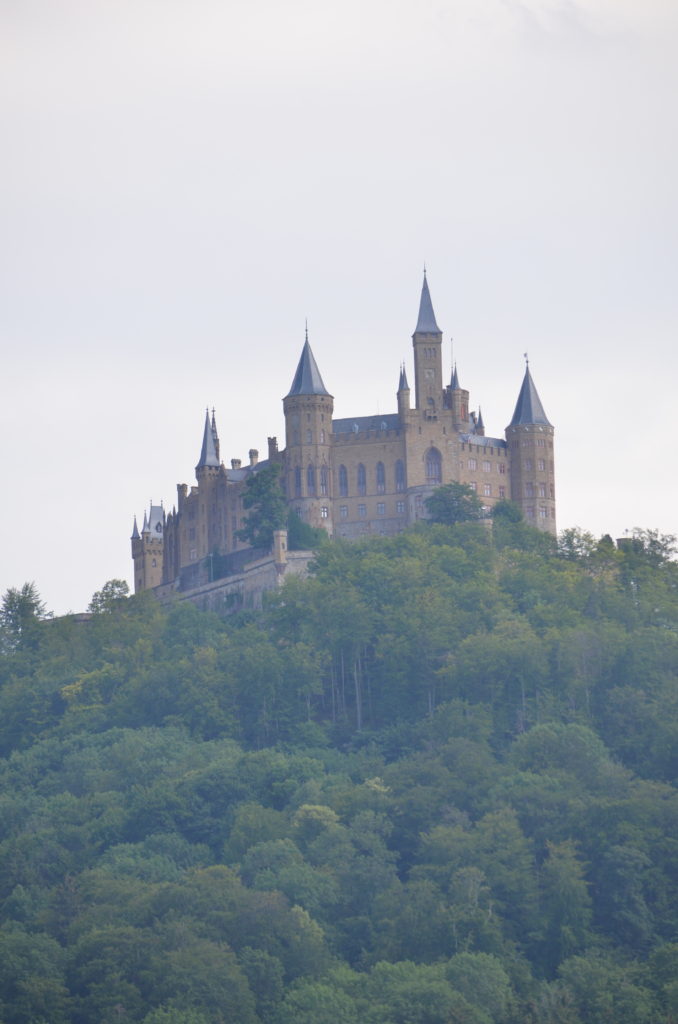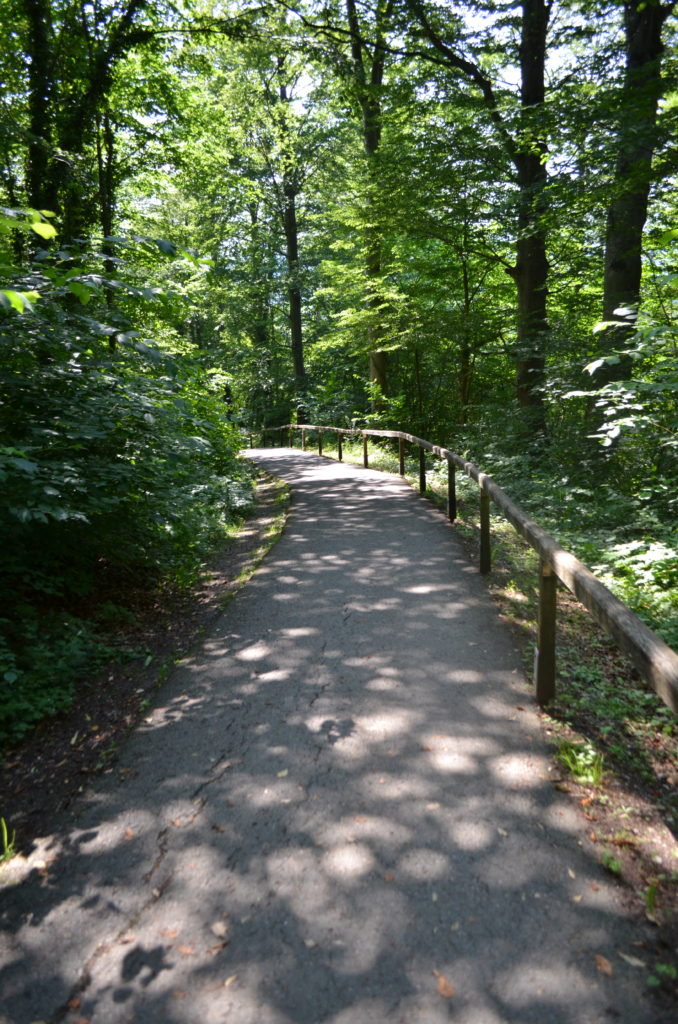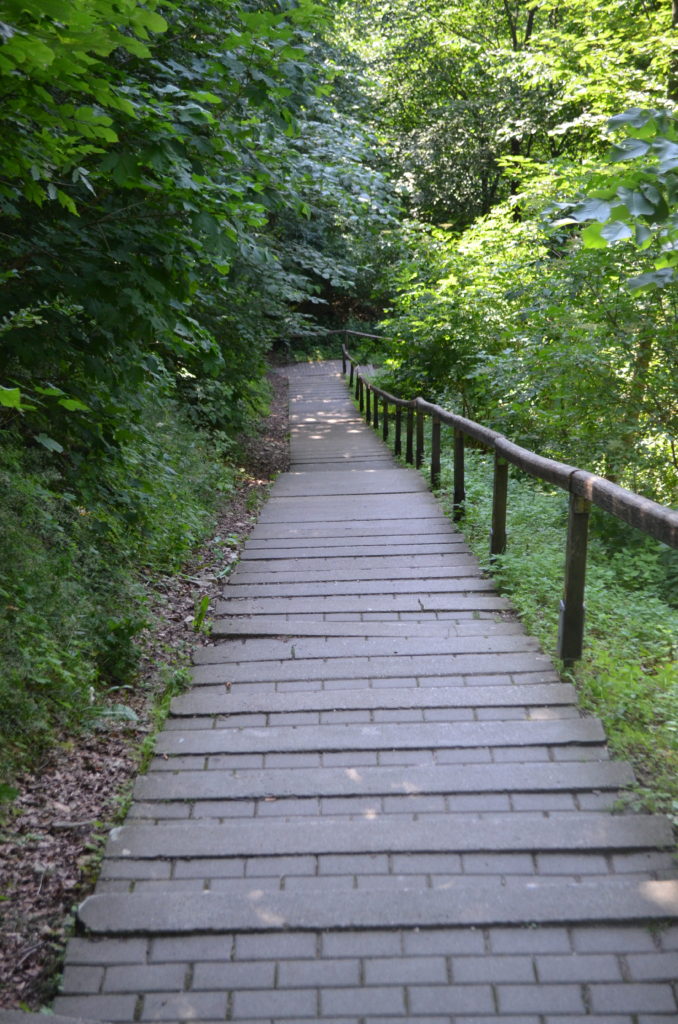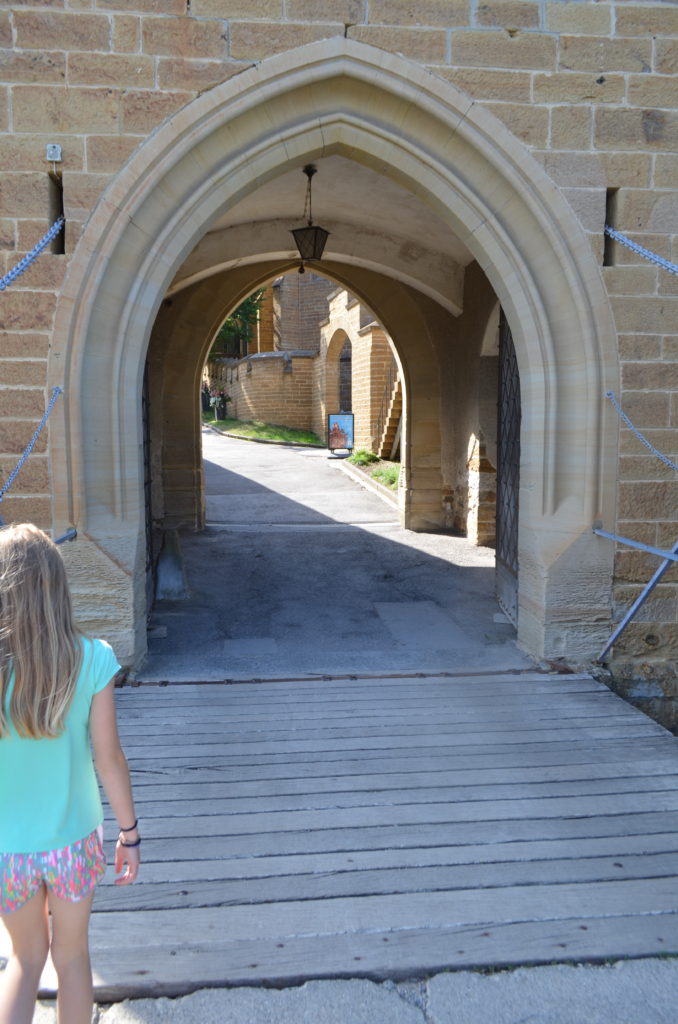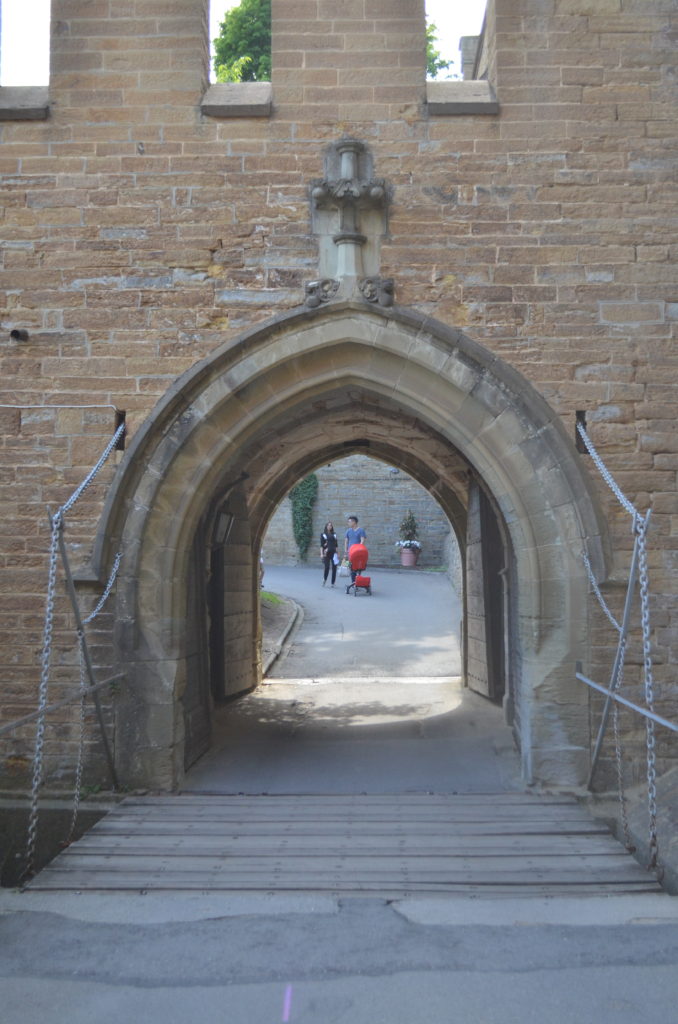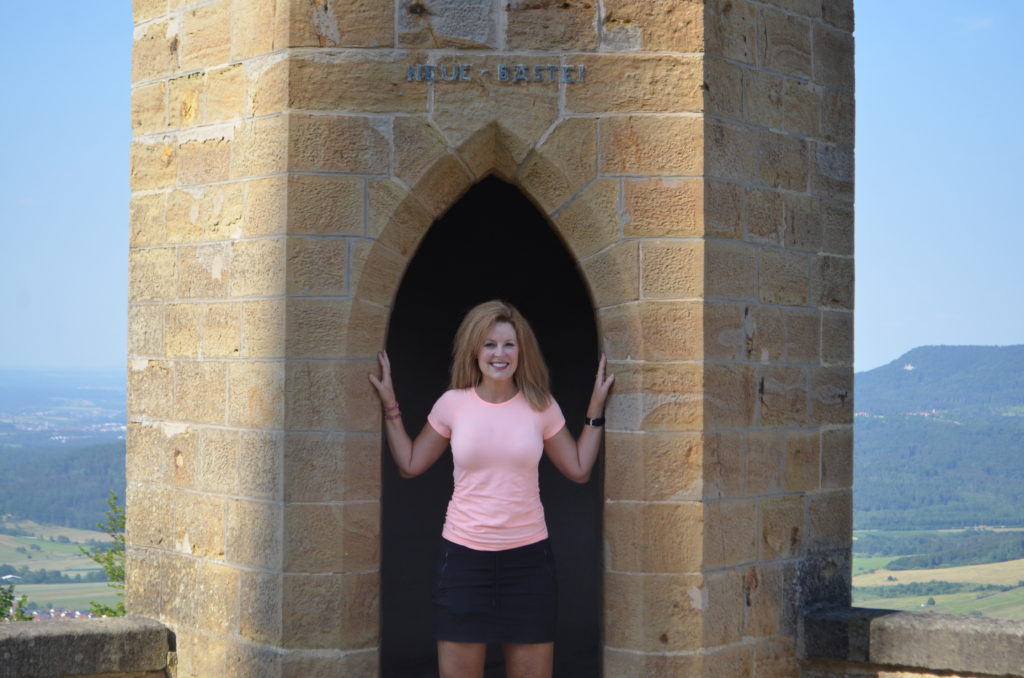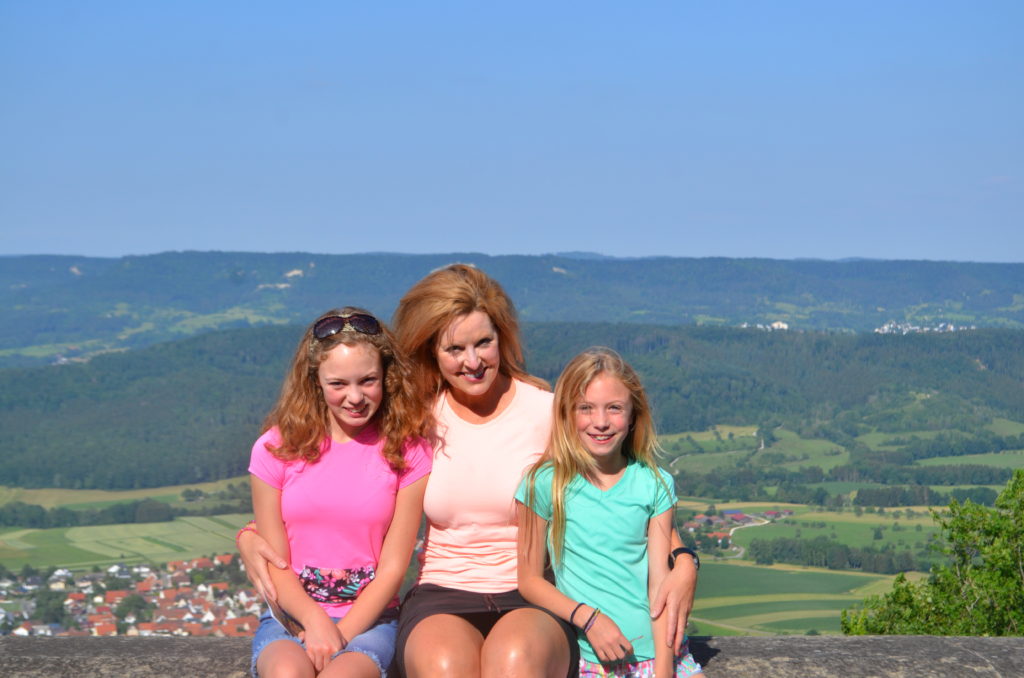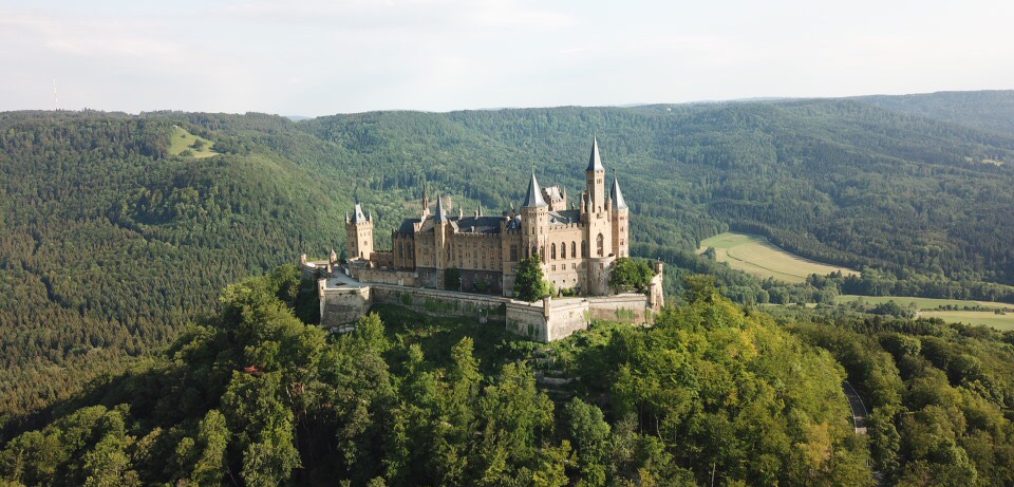
Burg Hohenzollern, also known as Hohenzollern Castle
Imposing, inspiring and a favorite
Our itinerary had us going south to Switzerland today, and we got a late start, but nothing was going to stop us from seeing Hohenzollern. Looking at the time (1 p.m.), we’d have two hours to arrive, grab a tour and then drive four hours south to the authentic farm we are renting (yes, you heard that right). More on that tomorrow, but for now, let’s focus on this incredible castle, which by the way, is still home to the last in the line, Prince George Freidrich of Prussia, his wife and four children often live in his “apartment” on one of the floors (or two) of this super-sized castle.
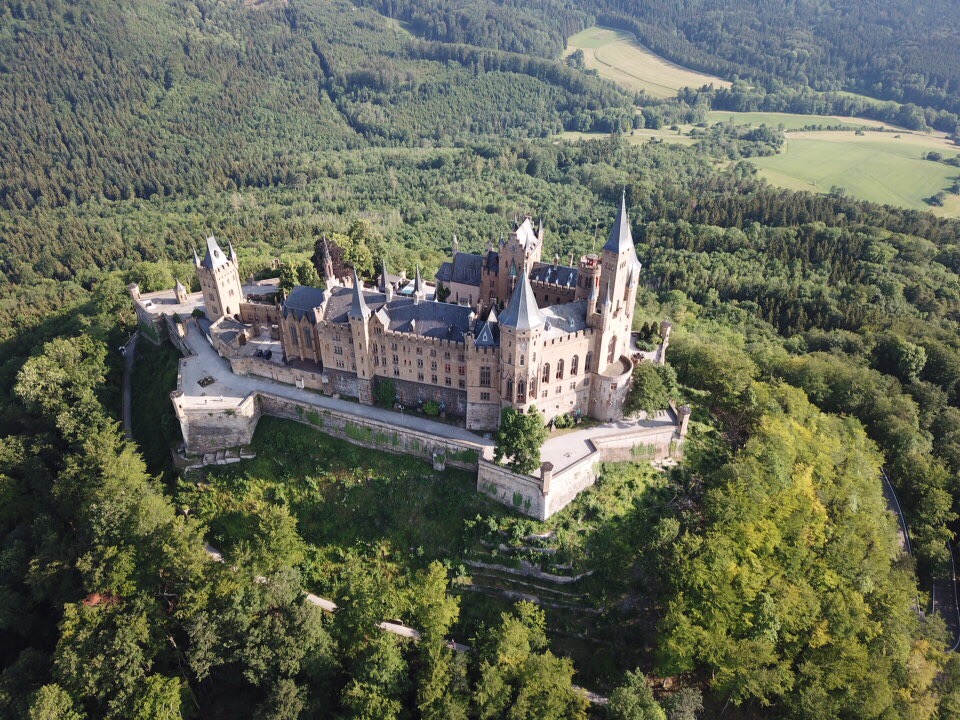
As I manned the physical camera, Rog handled the drone, and we tag-teamed to get incredible shots of this incredible castle. You can see a bit of the 3 sections, which started in the 11th century. Presently, Prince Frederick and his relatively new wife Sophie live in an entire floor (or more) of the castle. We missed the during our visit. Dang.
Getting there
Our map took us about 30 km from Stuttgart, and then by the backroads, so the last sixty minutes or so were dipping up and down, this way and that through the back fields of Germany. Like the Rhein part of Germany, this area doesn’t require irrigation, which is the primary reason both areas were always in some sort of war. He who had the food lived, and ironically, lots of people died in order for the few to live.
Passing through several towns on our way to Hohenzollern Castle–does one get more local this this?? (the navigation on the car shows the windy, back roads.
Off the road, it’s literally one right for a few miles and another right to the only castle entrance. Lots of lower area parking was available and 100% empty. At the very base of the castle is the smallest lot and ticket agent. We literally had front row parking, probably due to the fact everyone else was at Neuschwanstein in Fussen, but the reality of kids still being in school until the end of July didn’t hurt.
The final buildings before the last few miles which are nothing but agricultural fields. This was my stop-the-car shot, about a mile down from Hohenzollern with the long lens.
Tickets and walk
A family of four gets a discount and entrance fee, plus parking for 24 Euros. With the 45-minute tour, it’s only another four Euros! What a deal. More wonderful than the low cost—lower than Lichtenstein Castle, which we visited earlier in the day, the tour was limited to 12 people. Unfortunately, one thing was about the same—the gnarly walk up. In fact, Neuschwanstein was a longer journey up, but less fiercely steep. Hohenzollern is a shorter walk because it’s l about a 25-30% grade on the steps going right up. Several thousand wood, stone and brick steps are going to set you back 30 minutes, but we were late, so we practically ran up. My chest screamed and my legs ached, but we did it in 10.
I don’t recommend it.
Two types of paths–the first is the more gradual, then it’s stairmaster time
Of course, if we’d gone at a leisurely pace, it would have been 20, and all sorts of folks were making the trek. That said, if you want to take the car, it’s available. No horse drawn carriages though. This place is clean and simple.
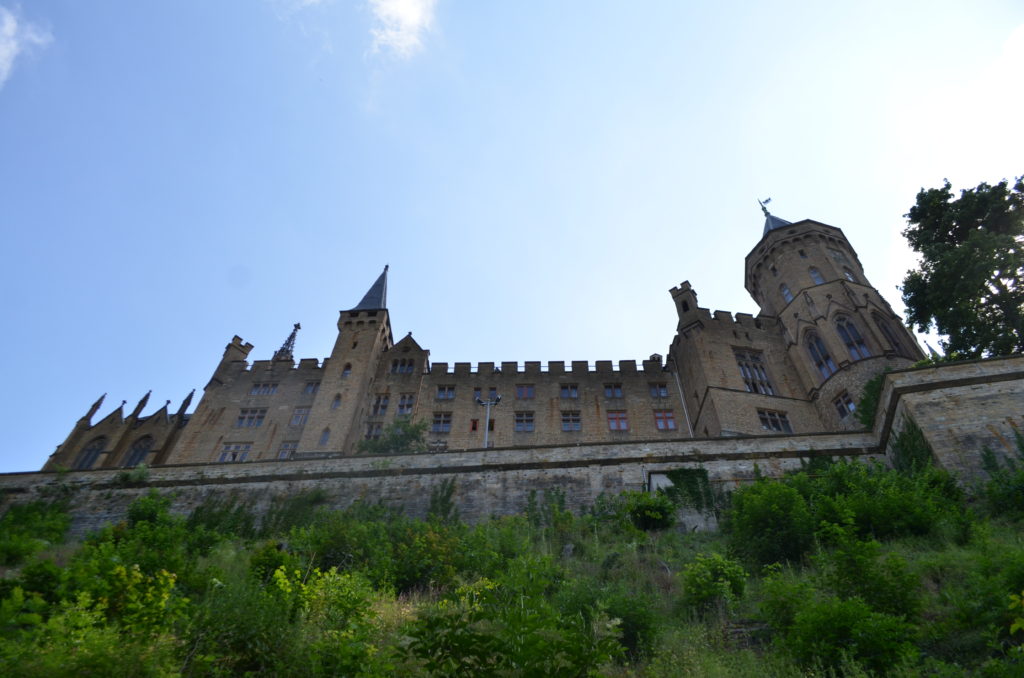
A look up from as you walk the final 100 feet before you start yet another climb on the carriage road into the castle proper
The entrance and tour
Consistent with the other castles in Germany, the grounds are accessible and free to tour. Only the parking fee must be paid (if you don’t find free parking). The outside of the castles is like Hohenschwangau, because it’s expansive and lovely. Hohenzollern Castle truly goes 360 around the structure once you are on the grounds, which is pretty incredible. Unlike Neuschwanstein, which has valleys on one side and mountains on the other, Hohenzollern is all around valleys. It is literally on top of the world.
Two of the four drawbridges as you walk up, and the last one under a tower
The entrance and tour
The tours begin inside the castle, so you walk all the way through the carriage entrance, which is long and wide. Round and round you go, up and up on what was once the long, carriage drive over four different drawbridges, each one another means to prevent invading armies. Through the last entryway is the primary courtyard. It’s grand and great for photos. On the right is one of several stone stairways, one designated as the entrance.
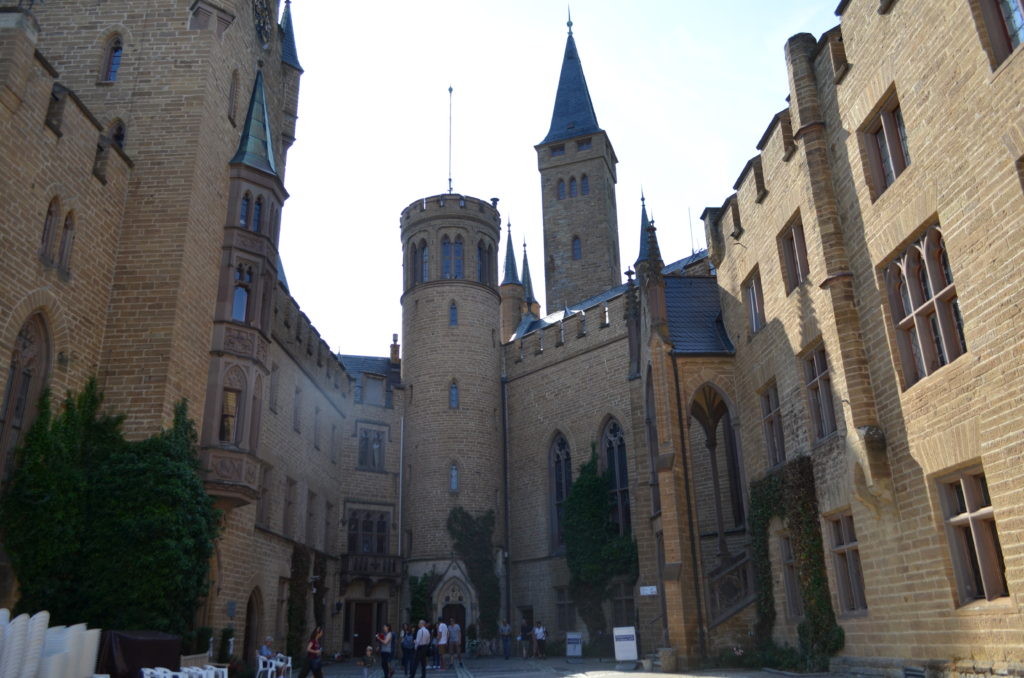
The main outdoor courtyard–the chapel entrance to front left, the entry to the ancestral room to the right, where the two signs are placed. It looks like the predecessor for the two-story columns favored in the 80s homes built in the US.
The door is locked at all times, so be forceful when you knock, because that baby is solid wood, and enormous. Our tour guide answered, a kindly, German-speaking elderly man who showed us where to pick out felt slippers. One does not remove shoes in this castle; the oversized, McDonald’s-like slippers go right on.

Imagine your first invitation to the castle, and up you go to the double doors leading directly into the Ancestral Room. You crane your head up and around to the hand-painted genealogical chart spanning hundreds of years to the present day prince.
From there, the tour begins. Since we could only make the German-speaking tour, we were given free guidebooks with our tour in English. This wasn’t really necessary, however. Most of the rooms had displays with English subtitles. Only the smaller, inner chambers lacked this feature. Still, if you’re a history buff, grab the brochure, because it’s free and that way you don’t miss out.
What you see
Since this castle is so massive, the tour, while forty-five minutes, still only gives you a fraction of the space, but what you see is inspiring. The first room on the tour—and focal point for visitors past and present is the Ancestral Room, which is a two-story high room showing the dynasty on the walls, starting at the very top with the coat of arms for the family represented. The hand-painted ancestral chart shows the genealogy well enough for any quilter or family history expert to eye it with envy.
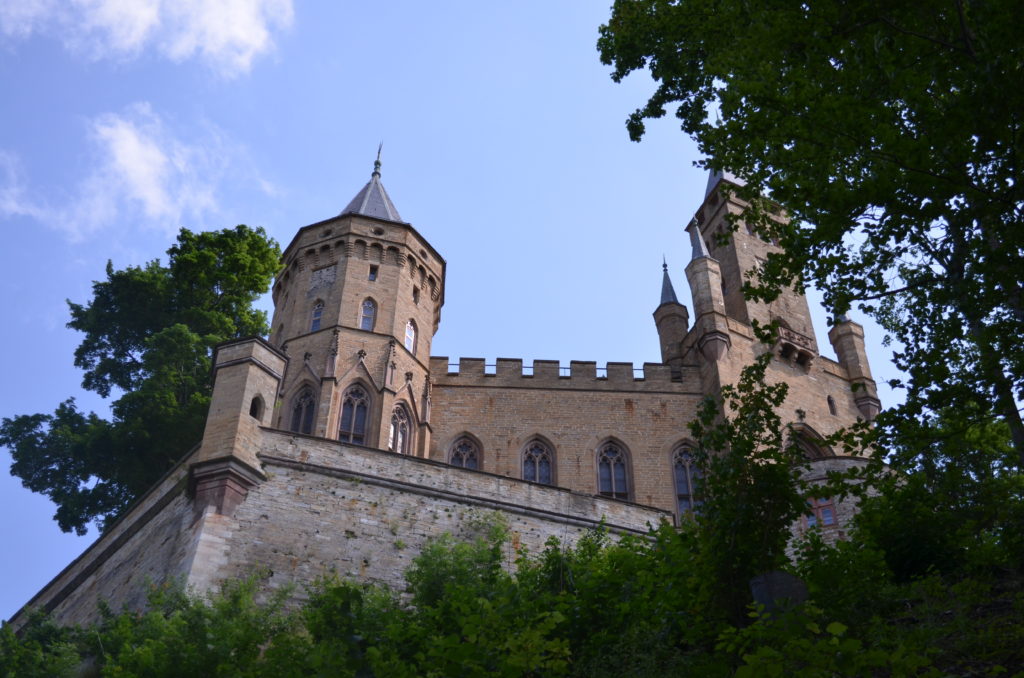
The castle was built in three phases–but it’s referred to as “three castles” because each one was completed on its own, not left unfinished. You can tell the evolution by the brick and structure.
From there, we were led to the count’s hall is for socializing, and we mistakenly thought it was a massive English-style dining hall, but no. Modern day designers surely copied the window seating which lines the entire room, along with tables set on either side, the inlaid marble flooring imported from Italy, and copied from the Karlstejn Castle in Prague (that’s where you can hold the eagle, owls and falcons, which I did and have the pictures. It was awesome). Since we visited that destination on our last visit, it was fun to notice the similarity. Massive iron chandeliers hang from above, ornate stain glass inlay is on every window, each offering glorious views to the valley below.
Then in to several inner chambers, a few of the Queens rooms as well as the Kings quarters. Hallways line the outside of the single floor, each and every single room covered with original, oil portraits of the home’s occupants. I inquired about the gold on the wallpaper with images of vines and flowers, and was told that yes, the room’s walls are hand painted gold leaf. In fact, all items in this castle are original, save for the curtains, which were replaced in the 2003 timeframe. You could tell where parts of the walls themselves had to be updated, because they were cracking. This is most likely due to the stone and concrete underneath sweating during the seasons, but it was insignificant, barely catching the eye.
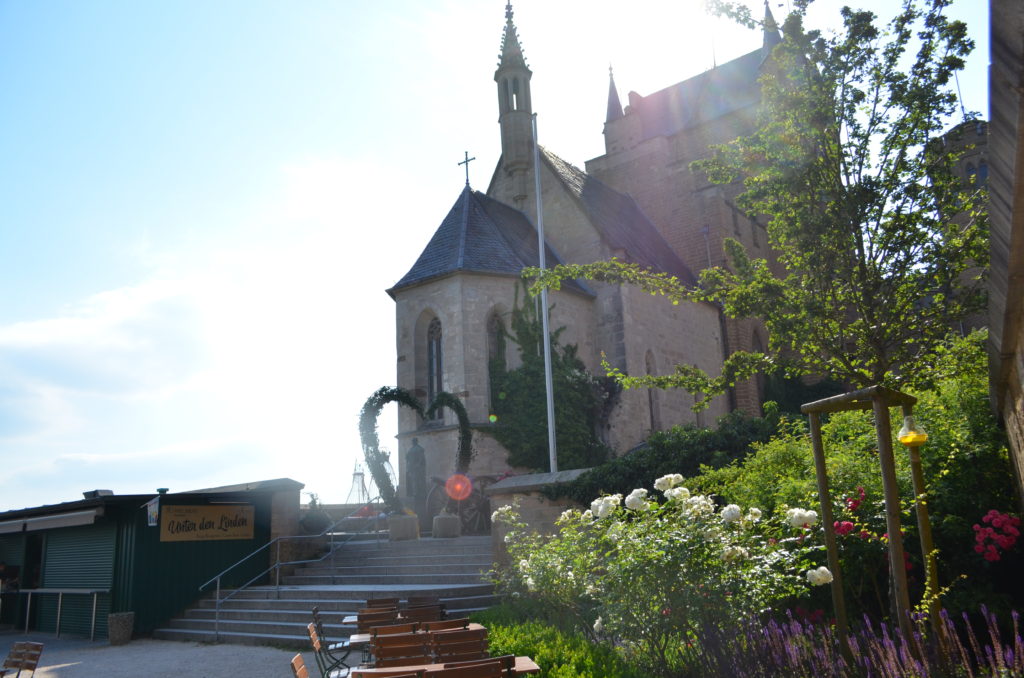
Just outside the chapel is this heart shaped metal with vines. Apparently, the castle is home to couples getting married. Below left is a large, outdoor eating area, which held large parties for those past and present
Always interesting: the small bedrooms
As with all the other castles, the actual bedrooms themselves are teeny, about 15×10 max, even for the King and Queen. The beds themselves are twins, and shorter than an American size. We hypothesize the rulers were too busy to hang out in the micro room. They had bigger and better things to be do.
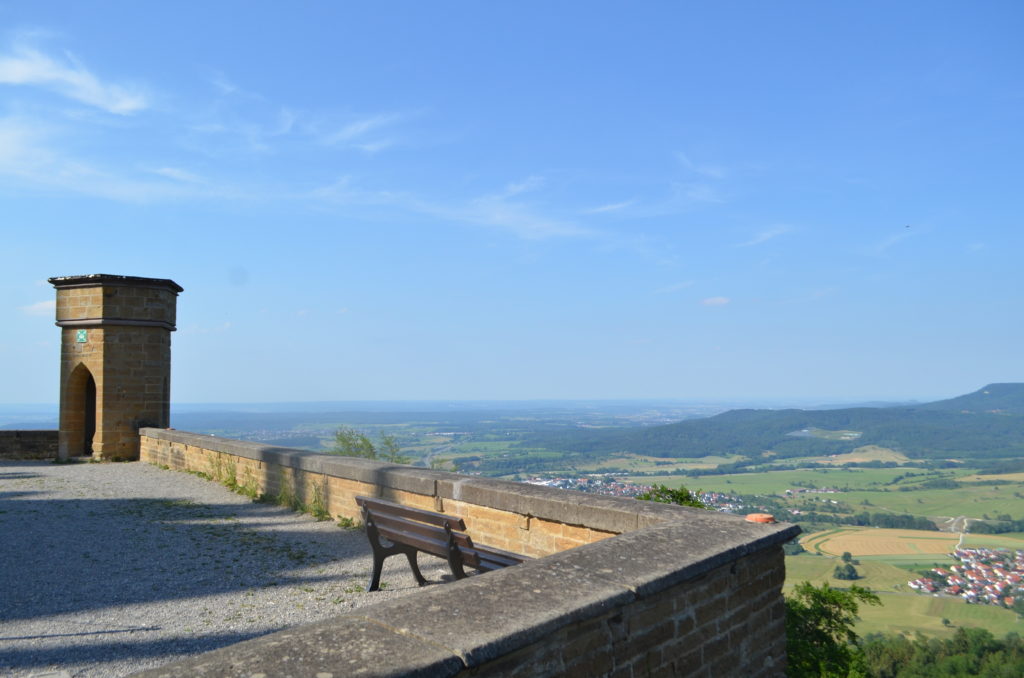
This castle offers a 360 view, the terraces extremely wide, the ledges thigh-height. If you fall, it’s a long drop.
The artifacts
In the final room of the tour within the castle is stocked with replicas of the crown and jeweled sniffing boxes, swords, flatwear and original clothing. Regarding the jewels, the guidebook identifies them as replicas, so it was unclear to me why it’s been put behind a three-inch piece of bulletproof glass, inset within a four-inch concrete frame, along with the three-inch steel door to shut when the visitors leave. Me being me, I inquired.
“Yes, these are replicas, but we are pretending they are real by virtue of the anti-theft elements just to make you think you’re in a museum.” Huh.
The tour guide confirmed what was in the guidebook: the real items are in the Berlin Palace, but the snifter boxes were stolen in a spectacular burglary in 1953.
The finale was a visit to the chapel was next, and it was as equally grand as the rest of the castle.
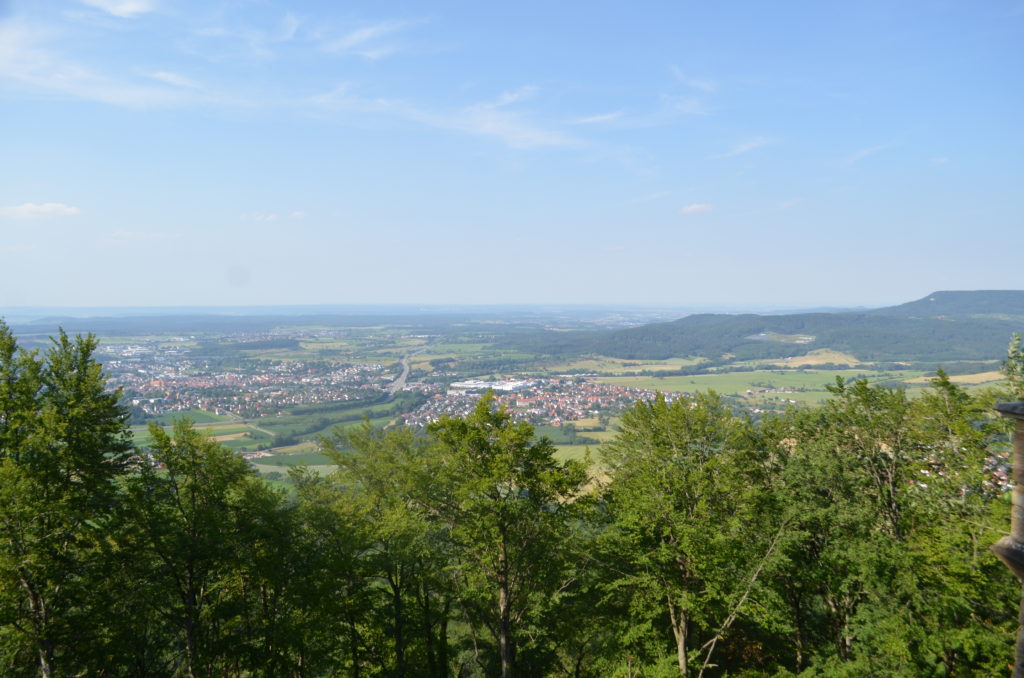
But wait, there’s more
Of all the floors and massive square footage (100+ thousand), we saw probably 3,000 square feet.
“What’s going on with all the rest?” I asked. I was told the present prince and his family occupy and entire floor (or more) of the three-part castle. I’d give that probably 20,000 square feet, give or take. It has its own private garden, two entrances and who knows how many square feet for staff and the like. Still, that leaves about 80,000 left unaccounted for. Still seeking a better answer, I asked the nice ladies at the information desk, they demurred; the sides of their lips turned down, eyelids lowered and a single nod of their head was all I got. It basically said: Didn’t your mother teach you any manners? So disappointed I even have to give you ‘the look.’
I’ll definitely use the look somewhere down the line in a book. It was a classic ‘older-woman-scolding another female who lacks couth.’
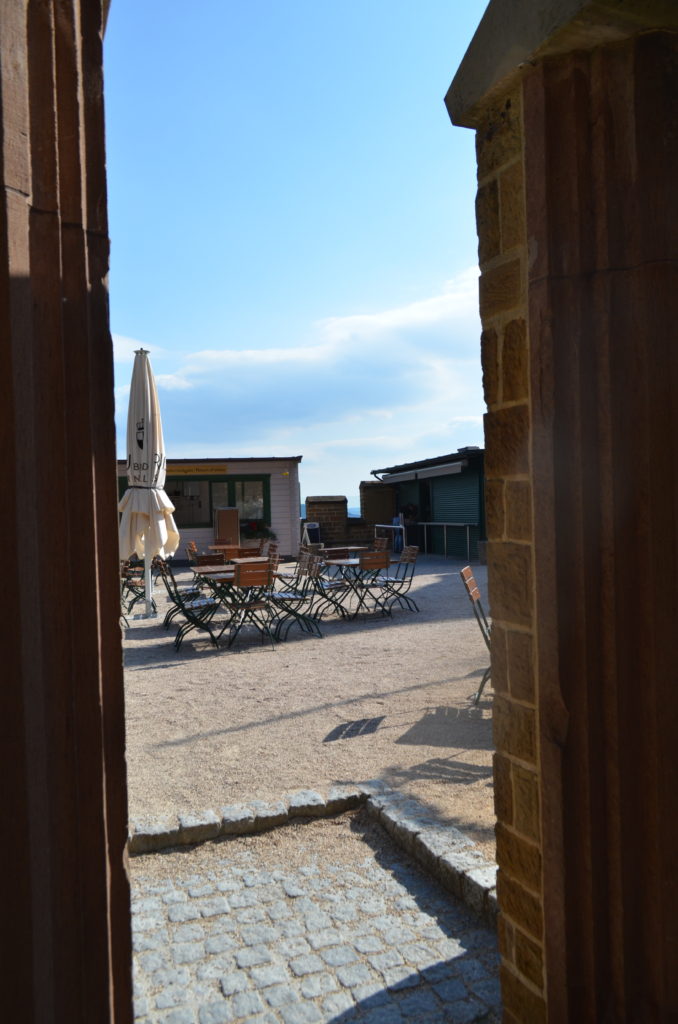
The formal entry into the large dining/outdoor reception area that is presently an outdoor café. This is where all the garden parties and outdoor social activity took place.
Tip: drones are allowed, and this is another difference from the US or Mexico. In those areas, historical sites are mostly a no-fly zone, and most drone systems link in to the FAA by law, identifying the air space. This means Mt. Rushmore and so many other places are no-fly zones.
Compare that to Europe: the UK, Germany, and elsewhere. A little notice pops ups, that is basically a disclaimer of damage. The operator of the drone agrees that if the drone he/she is operating damages anything, then they are liable. The airspace controller for that location has the code for the drone operator so it would be tracked and validated.
Also, the elevation rules are totally different. One can get within 400 or 700 feet of the destination depending. This means better shots all around.
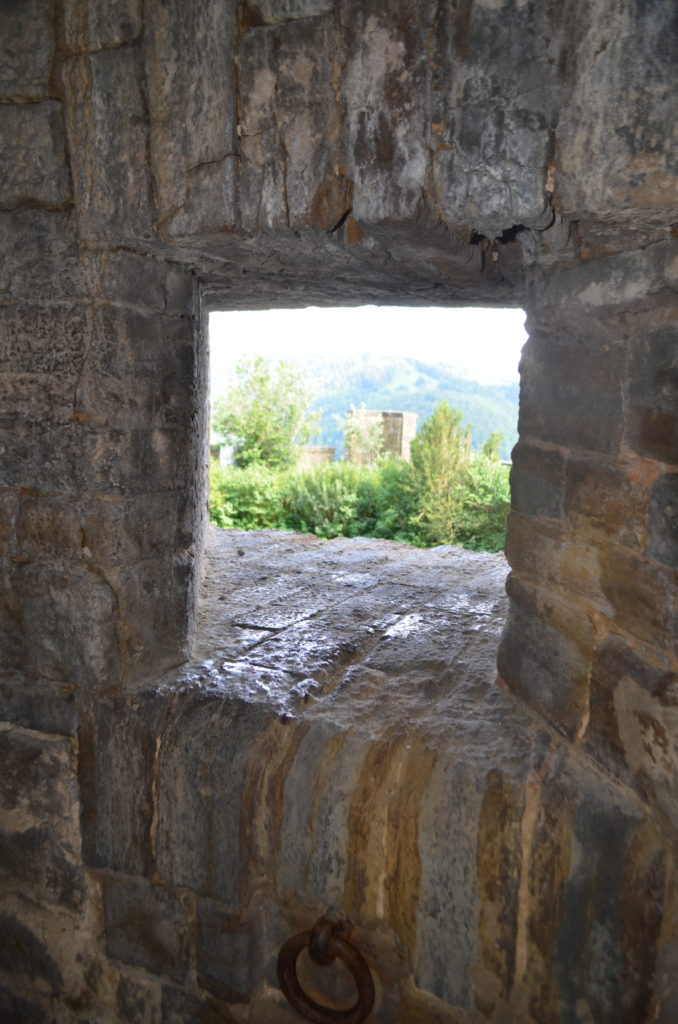
Key-hole shots around the entire perimeter, starting with the carriage road.
What I loved
Everything. I even liked the walk up in hindsight. All I need to do is visit a castle a day and my body will be bathing suit ready in no time.
What I didn’t
Not seeing more of the castle.
Recommendation
Absolutely yes. It’s kid friendly, although we didn’t see any, other than our own. It’s also practically vacant, and we can’t understand why, but were happy to benefit from the absence of others.


